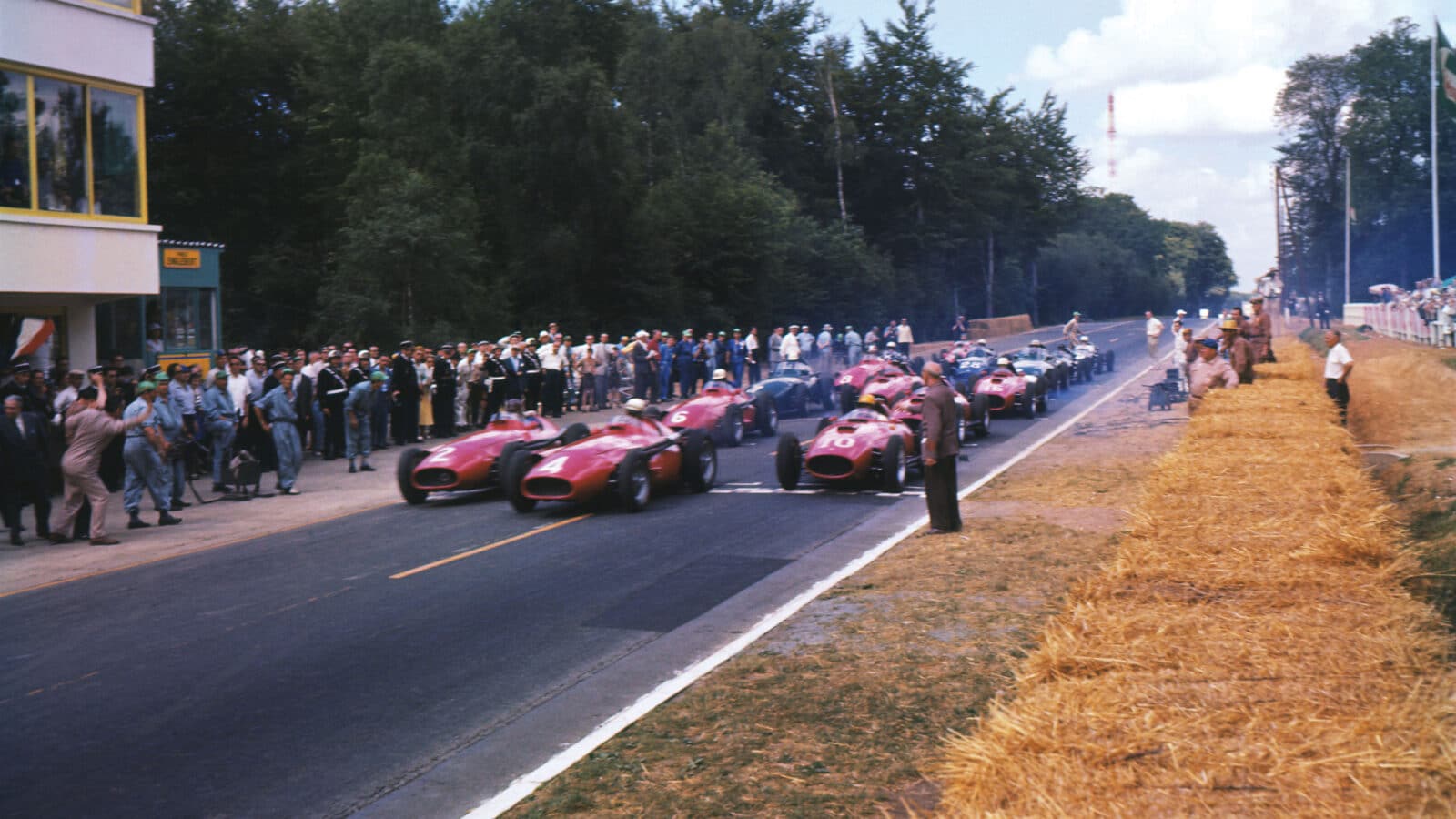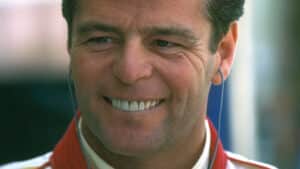France’s fearsome street circuit: Rouen-les-Essarts where Fangio gave a ‘driving lesson’
Sweeping public roads made Rouen-les-Essarts a circuit that thrilled and feared

The start of the 1957 French GP. Front row, from left: Juan Manuel Fangio, Jean Behra – both in Maseratis – and Ferrari’s Luigi Musso
Grand Prix Photo
Rouen-les-Essarts was one of the finest circuits in Europe at one time, both feared and revered by drivers for the challenges it posed.
The track, established at Orival near the medieval city of Rouen in 1950, had many different configurations and hosted the French Grand Prix five times before it closed in 1993. In the summer of 1962 Dan Gurney famously gave Porsche its first and only grand prix victory there. Juan Manuel Fangio’s victory in 1957, when he beat the Ferraris in his Maserati, was described in reports at the time as a “driving lesson” and one of his greatest days.
Using public roads, this was originally a triangular street circuit covering just over three miles and then, in 1955, it was extended by more than a mile and considered to be on a par with Spa due to its wonderful high-speed corners and swooping undulations.
Rouen demanded both skill and courage. This was a proper old-school circuit, the natural contours of the land creating a fast, flowing and fearsome layout with plenty of elevation changes with gradients of 9% and more. Many a driver had described the downhill part as terrifying, a place that worried the bravest of the brave. In 1973 a chicane was added ahead of the notorious Six Frères section in a belated attempt to make the circuit safer but Jo Schlesser’s fatal crash in 1968– and a number of other fatalities in the early 1970s – signalled the end of grand prix racing. Formula 2 continued at the track until 1978.
Some of the public roads that made up the circuit are still used which allows racing fans on their way to, or from, Le Mans to visit what in its heyday was considered to be one of Europe’s greatest tracks. The grandstands, control towers and pits are long gone but the cobblestones at the Nouveau Monde hairpin remain visible and you can still drive some of this historic track before the original circuit disappears into the forest.
Visit Motor Sport’s online database to see details on racing circuits past and present.
Rouen-les-essarts
First car race 1950
Last car race 1993
Lap record 1min 46.310sec, Ingo Hoffmann, March 782, 1978
My top 3 tracks: Derek Warwick
- Monaco In the ’80s and early ’90s it was amazing, especially driving with a H-pattern gearbox. You drove basically one handed while missing the barriers by millimetres. I loved it. The concentration and commitment was total. It really was one everyone wanted to win.
- Suzuka The commitment and speed needed for Turn 1 was unbelievable. The uphill Dunlop Curve, Spoon, leading into 130R which previously was much tighter than it is now and one of those corners you had to take a deep breath before trying to attempt it flat out.
- Silverstone One of the biggest challenges on the calendar. Stowe was one of those corners that you always seemed to leave something there, then Club, Abbey and into Bridge Corner which was one of those turns that gave total satisfaction – an amazing corner.

